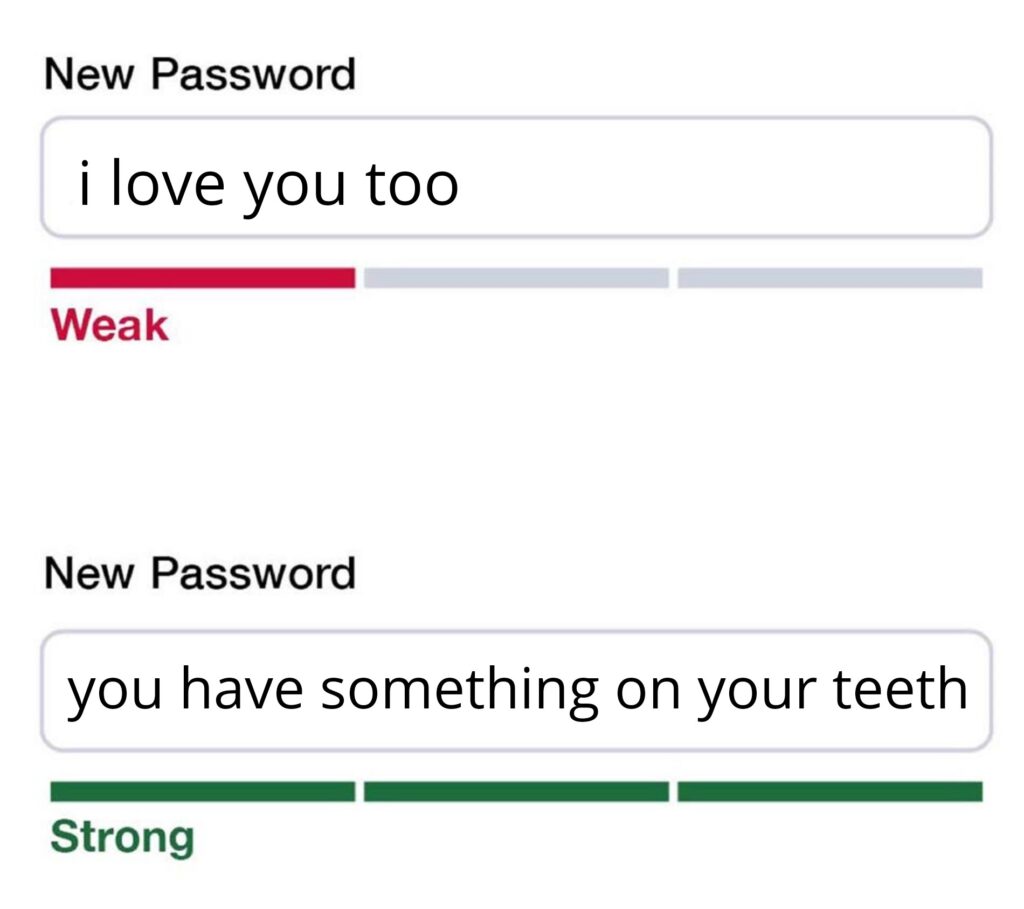Contents
Introduction
In the realm of digital security, the iPhone’s passcode system stands as a critical barrier safeguarding personal information and sensitive data. With the proliferation of smartphones as central hubs for communication, finance, and personal documentation, the importance of passcode security cannot be overstated. However, the notion of hacking an iPhone’s passcode raises complex ethical and technical considerations, prompting a nuanced exploration of the topic.
This comprehensive guide delves into the intricate landscape of hacking iPhone passcodes, unpacking the methodologies, implications, and ethical dimensions inherent in such endeavors. It seeks to provide users with a holistic understanding of passcode security, the vulnerabilities inherent in the iPhone’s security architecture, and the potential avenues for unauthorized access.
Understanding iPhone Passcodes:
The introduction sets the stage by elucidating the fundamental concepts surrounding iPhone passcodes. It delves into the diverse types of passcodes available, from traditional numeric codes to complex alphanumeric combinations, highlighting the significance of robust passcode selection in fortifying device security. Moreover, it outlines the pivotal role of passcodes within the broader framework of iPhone security features, emphasizing their function as the first line of defense against unauthorized access.
Importance of Passcode Security:
The discussion extends to underscore the paramount importance of passcode security in safeguarding personal privacy and data integrity. As iPhones increasingly serve as repositories for sensitive information, including financial credentials, personal communications, and medical records, the integrity of the passcode system assumes heightened significance. The introduction illuminates the far-reaching implications of passcode breaches, from identity theft to financial fraud, underscoring the imperative for stringent passcode protection mechanisms.
Ethical Considerations in Hacking:
Central to the discourse is an exploration of the ethical dimensions surrounding passcode hacking. The introduction navigates the nuanced ethical terrain, probing questions of privacy invasion, data integrity, and legal compliance. It encourages readers to grapple with the ethical implications of hacking, emphasizing the imperative for responsible and principled conduct in navigating the complexities of digital security.
By laying a robust foundation grounded in technical understanding, ethical discernment, and practical considerations, the introduction primes readers for a comprehensive exploration of iPhone passcode hacking. It underscores the multifaceted nature of the topic, inviting readers to engage critically with the challenges, dilemmas, and opportunities inherent in the pursuit of passcode security. As users embark on this enlightening journey, they are empowered to navigate the complexities of digital security with insight, integrity, and ethical discernment.
Understanding iPhone Passcodes
In the digital age, where personal information is stored and accessed through smartphones, understanding iPhone passcodes becomes paramount. This section delves into the intricate workings of iPhone passcodes, elucidating the diverse types, their significance, and the broader context of iPhone security features.
Types of iPhone Passcodes:
iPhone passcodes encompass various formats, ranging from simple four-digit numeric codes to more complex alphanumeric combinations. This subsection explores the spectrum of passcode options available to users, emphasizing the importance of selecting robust and unique passcodes to thwart unauthorized access attempts.
Importance of Strong Passcodes:
The strength of an iPhone passcode serves as the primary line of defense against unauthorized access and data breaches. This subsection underscores the critical role of strong passcodes in safeguarding personal privacy, financial security, and sensitive information stored on iPhones. It highlights the importance of incorporating diverse characters, including letters, numbers, and symbols, to enhance passcode resilience against brute-force attacks and unauthorized intrusion.
Overview of iPhone Security Features:
Within the broader framework of iPhone security, passcodes represent one layer of a multi-faceted defense mechanism. This subsection provides an overview of iPhone security features, including Touch ID, Face ID, and encryption protocols, which complement passcode protection. By elucidating the interplay between passcodes and other security measures, users gain a holistic understanding of iPhone security architecture and its implications for data protection.
By comprehensively examining iPhone passcodes within the context of broader security considerations, users are equipped with the knowledge and tools necessary to navigate the intricacies of passcode selection, implementation, and management. As the digital landscape evolves and threats to data security proliferate, understanding iPhone passcodes emerges as an indispensable facet of responsible digital citizenship. Through informed decision-making and proactive security measures, users fortify their digital defenses and safeguard their personal information against emerging threats and vulnerabilities.
Methods of Hacking iPhone Passcodes
In the digital realm, the pursuit of unauthorized access to iPhone passcodes encompasses a variety of techniques and strategies. This section delves into the methodologies employed in hacking iPhone passcodes, shedding light on brute-force attacks, social engineering techniques, and the exploitation of software vulnerabilities.
Brute-force Attacks:
Brute-force attacks represent a brute, yet systematic approach to unlocking iPhone passcodes by attempting every possible combination until the correct one is identified. This subsection provides an overview of brute-force attacks, highlighting their efficacy in bypassing passcode security measures while also underscoring the inherent risks and limitations associated with prolonged attack durations and potential device lockouts.
Social Engineering Techniques:
Social engineering tactics leverage psychological manipulation and deception to coerce individuals into divulging sensitive information, including iPhone passcodes. This subsection explores the various forms of social engineering attacks, such as phishing emails, pretexting, and impersonation, which exploit human vulnerabilities rather than technical weaknesses to gain unauthorized access to passcodes.
Exploiting Software Vulnerabilities:
The exploitation of software vulnerabilities represents a sophisticated approach to hacking iPhone passcodes, capitalizing on flaws within the iPhone’s operating system or associated software applications. This subsection delves into the intricacies of software vulnerabilities, including zero-day exploits, buffer overflow attacks, and privilege escalation techniques, which enable hackers to circumvent passcode protections and gain unauthorized access to device data.
By dissecting the methodologies of hacking iPhone passcodes, users gain a nuanced understanding of the threats posed by malicious actors and the vulnerabilities inherent in digital security systems. Armed with this knowledge, individuals are better equipped to fortify their digital defenses, adopt proactive security measures, and mitigate the risks of unauthorized access to sensitive information stored on iPhones. As the digital landscape continues to evolve, understanding the intricacies of hacking methodologies remains essential to preserving personal privacy, safeguarding sensitive data, and upholding the principles of digital security.
Tools and Software for Hacking iPhone Passcodes
In the pursuit of hacking iPhone passcodes, malicious actors leverage a variety of tools and software applications designed to exploit vulnerabilities and bypass security measures. This section provides insight into the landscape of hacking tools and software, highlighting their capabilities, legal implications, and associated risks.
Overview of Hacking Tools and Software:
Hacking tools and software encompass a diverse array of applications tailored to exploit specific vulnerabilities within iPhone passcode security mechanisms. This subsection offers an overview of prominent hacking tools and software, ranging from open-source penetration testing frameworks to proprietary exploit kits, which enable hackers to conduct sophisticated attacks with varying degrees of automation and sophistication.
Legal and Ethical Considerations:
The use of hacking tools and software raises profound legal and ethical considerations, as their deployment may violate laws governing unauthorized access to computer systems and personal data. This subsection explores the legal landscape surrounding hacking tools, highlighting the potential ramifications of their use, including criminal prosecution, civil liability, and reputational damage. Additionally, it underscores the ethical imperative for responsible and principled conduct in navigating the complexities of digital security.
Risks Associated with Hacking Software:
While hacking tools offer capabilities for bypassing passcode protections and gaining unauthorized access to iPhone data, their use carries inherent risks and vulnerabilities. This subsection examines the risks associated with hacking software, including exposure to malware, susceptibility to detection by security systems, and potential compromise of personal information and credentials.
By illuminating the landscape of hacking tools and software, users gain insight into the methodologies employed by malicious actors to compromise iPhone passcode security. Armed with an understanding of the legal and ethical considerations surrounding hacking activities, individuals are empowered to make informed decisions regarding the responsible use of hacking tools and software. As the digital threat landscape evolves, vigilance, ethical discernment, and adherence to legal norms remain essential in safeguarding personal privacy and preserving the integrity of digital ecosystems.
Legal and Ethical Implications
The pursuit of hacking iPhone passcodes raises profound legal and ethical considerations that merit careful examination and reflection. This section delves into the legal and ethical dimensions surrounding passcode hacking, exploring the complexities of legality, ethical conduct, and societal implications.
Discussion on Legality:
The legality of hacking iPhone passcodes is governed by a complex interplay of local, national, and international laws pertaining to computer security, privacy, and intellectual property. This subsection navigates the legal landscape, examining statutes such as the Computer Fraud and Abuse Act (CFAA) in the United States and equivalent legislation in other jurisdictions. It highlights the potential legal consequences of unauthorized access to iPhone passcodes, including criminal charges, civil liabilities, and regulatory sanctions.
Ethical Considerations in Hacking:
Beyond legal constraints, passcode hacking implicates a host of ethical considerations that extend beyond mere compliance with the law. This subsection explores ethical principles such as privacy, autonomy, and fairness, which underpin responsible digital conduct. It challenges readers to consider the ethical implications of hacking activities, including the invasion of personal privacy, potential harm to individuals or organizations, and the erosion of trust in digital systems.
Consequences of Illegal Hacking Activities:
The repercussions of illegal hacking activities reverberate far beyond individual perpetrators, impacting victims, communities, and society at large. This subsection examines the broader societal consequences of passcode hacking, including financial losses, reputational damage, and erosion of public trust in digital technologies. It underscores the importance of fostering a culture of ethical behavior and responsible digital citizenship to mitigate the risks posed by malicious actors and safeguard the integrity of digital ecosystems.
By engaging with the legal and ethical dimensions of passcode hacking, users gain insight into the broader implications of their actions and the responsibilities inherent in navigating the complexities of digital security. Through adherence to legal norms, ethical principles, and responsible conduct, individuals contribute to the preservation of personal privacy, the promotion of digital trust, and the advancement of a more secure and equitable digital society.
Protecting Against Passcode Hacking
In light of the evolving threat landscape and the proliferation of hacking techniques targeting iPhone passcodes, proactive measures are essential to mitigate risks and safeguard personal privacy. This section explores strategies for protecting against passcode hacking, empowering users to bolster their digital defenses and preserve the integrity of their iPhone security.
Tips for Creating Strong Passcodes:
Creating strong and resilient passcodes forms the cornerstone of effective passcode security. This subsection offers practical guidance on crafting robust passcodes, emphasizing the use of complex combinations of alphanumeric characters, special symbols, and varying case formats. By adhering to best practices for passcode creation, users enhance the resilience of their passcodes against brute-force attacks and unauthorized intrusion.
Utilizing Additional Security Features on iPhone:
In addition to passcodes, iPhones offer a suite of supplementary security features designed to augment device protection and enhance user privacy. This subsection explores the utilization of features such as Touch ID, Face ID, and two-factor authentication (2FA), which provide additional layers of authentication and encryption to safeguard device access and sensitive data.
Best Practices for Safeguarding Personal Data:
Beyond passcode protection, adopting holistic security practices is essential to safeguarding personal data and mitigating the risks of unauthorized access. This subsection outlines best practices for data encryption, regular software updates, and secure data backups, which help fortify device resilience and resilience against emerging threats and vulnerabilities.
By embracing proactive security measures and adopting a comprehensive approach to passcode protection, users can effectively defend against passcode hacking attempts and preserve the integrity of their digital identities and personal information. As the digital threat landscape continues to evolve, vigilance, resilience, and adherence to security best practices remain indispensable in safeguarding against passcode hacking and mitigating the risks posed by malicious actors.
Case Studies and Examples
Examining real-world case studies and examples of passcode hacking incidents provides valuable insights into the methods, motivations, and implications of unauthorized access to iPhone passcodes. This section delves into notable instances of passcode hacking, analyzing the circumstances, impacts, and lessons learned from each scenario.
Real-world Examples of Passcode Hacking Incidents:
This subsection presents a selection of documented passcode hacking incidents drawn from diverse contexts and industries. Examples may include high-profile data breaches, targeted attacks on individuals or organizations, and instances of espionage or cybercrime. Each case study offers a detailed examination of the attack vectors, vulnerabilities exploited, and consequences of the passcode hacking incident.
Analysis of Security Breaches and Their Impact:
Through a comprehensive analysis of security breaches, readers gain insight into the multifaceted nature of passcode hacking and its implications for personal privacy, financial security, and organizational integrity. By dissecting the anatomy of security breaches, users develop a nuanced understanding of the tactics employed by malicious actors and the vulnerabilities inherent in digital security systems.
Lessons Learned from Past Incidents:
Drawing lessons from past incidents of passcode hacking, this subsection distills actionable insights and best practices for mitigating risks and enhancing digital resilience. By analyzing the root causes, response strategies, and remediation efforts implemented in response to passcode hacking incidents, users glean valuable lessons in proactive threat mitigation, incident response, and cybersecurity resilience.
By engaging with real-world case studies and examples of passcode hacking, users gain practical insights into the dynamics of digital security and the challenges posed by malicious actors. Armed with knowledge and awareness, individuals are better equipped to navigate the complexities of passcode protection, mitigate risks, and preserve the integrity of their digital identities and personal information. As the digital threat landscape evolves, the analysis of case studies serves as a valuable tool for enhancing cybersecurity awareness, resilience, and preparedness in an increasingly interconnected world.
Conclusion
As we conclude our exploration of hacking iPhone passcodes, it is imperative to reflect on the key insights, considerations, and recommendations elucidated throughout this guide. By traversing the multifaceted terrain of passcode security, hacking methodologies, and ethical considerations, users gain a deeper understanding of the complexities inherent in safeguarding digital identities and personal information.
Summary of Key Points:
Throughout this guide, we have navigated the intricacies of hacking iPhone passcodes, exploring diverse methodologies, legal and ethical dimensions, and proactive security measures. Key points include:
Understanding the nuances of iPhone passcodes and the importance of strong passcode security.
Exploring methodologies employed in hacking iPhone passcodes, including brute-force attacks, social engineering, and software vulnerabilities.
Examining the legal and ethical implications of passcode hacking and the responsibilities inherent in navigating the digital landscape.
Implementing proactive security measures, including strong passcode creation, utilization of additional security features, and best practices for safeguarding personal data.
Importance of Responsible Digital Citizenship:
Central to our discourse is the concept of responsible digital citizenship, which underscores the ethical imperatives, legal obligations, and societal responsibilities inherent in navigating digital ecosystems. By embracing principles of integrity, accountability, and respect for privacy, users contribute to the collective preservation of digital trust and the promotion of a secure and equitable online environment.
Call to Action:
As users embark on their digital journeys, we encourage ongoing vigilance, continuous learning, and proactive engagement in safeguarding digital identities and personal information. By remaining informed, proactive, and ethically grounded, individuals empower themselves to navigate the complexities of digital security with confidence, resilience, and integrity.
In conclusion, this guide serves as a comprehensive resource for users navigating the intricacies of hacking iPhone passcodes. By engaging critically with the challenges, dilemmas, and opportunities inherent in passcode security, users cultivate a culture of digital resilience, responsibility, and ethical conduct. As we chart our course in an ever-evolving digital landscape, let us uphold the principles of integrity, transparency, and respect for privacy, fostering a safer, more secure, and more equitable digital future for all.





